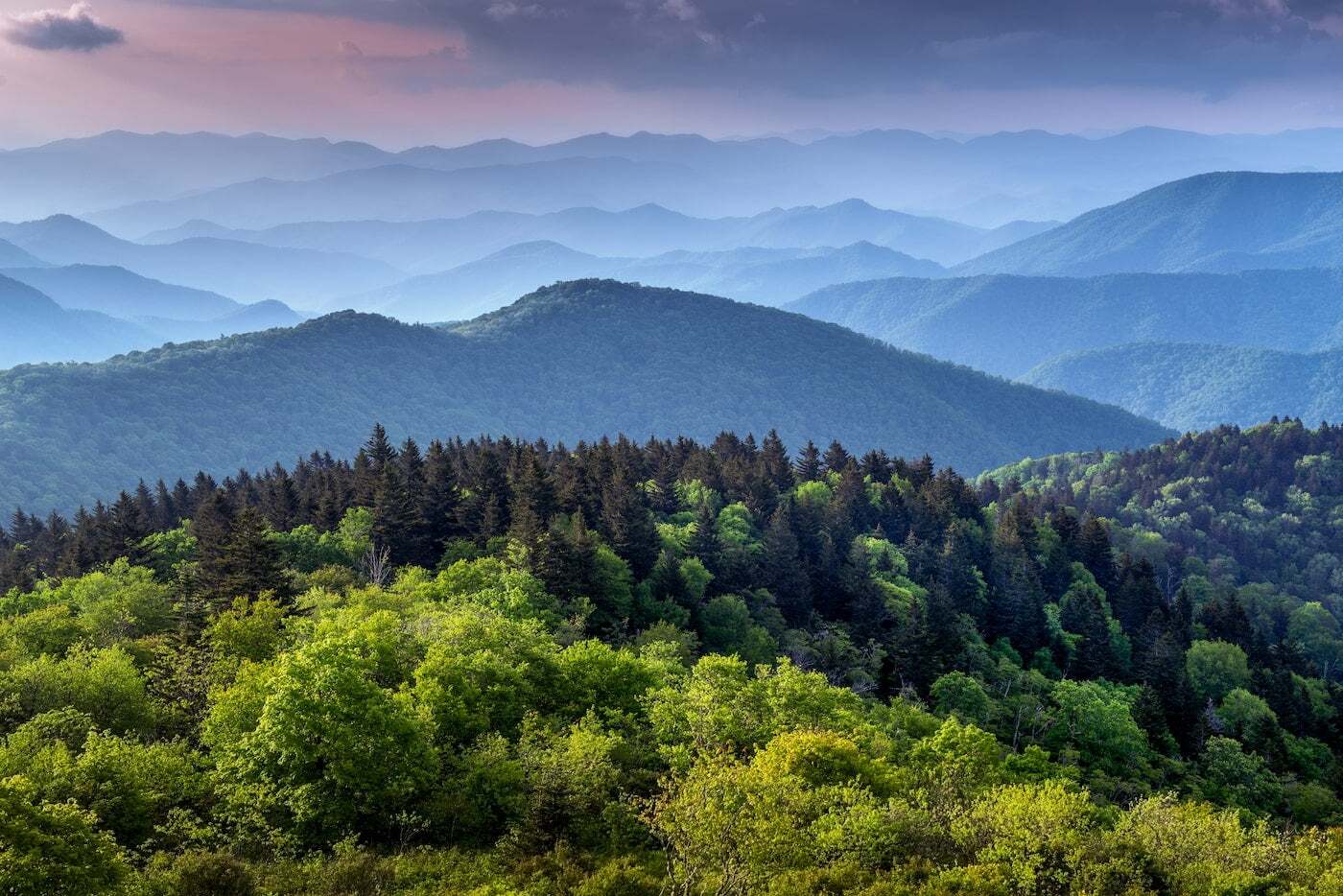
Ever wondered what makes the Great Smoky Mountains so special? Well, you're in for a treat! Nestled between Tennessee and North Carolina, this natural wonder isn't just a feast for the eyes; it's a playground for the curious. With a rich tapestry of biodiversity, history, and folklore, there's more to these mountains than meets the eye. From the mist that gives them their name to the ancient forests that whisper tales of yore, every nook and cranny holds a story. Great Smoky Mountains are not only a haven for hikers and wildlife enthusiasts but also a living museum, showcasing the resilience of nature and the spirit of Appalachia. Ready to uncover some jaw-dropping facts about America's most visited national park? Let's dive into the heart of the Smokies and discover what makes them truly magnificent.
Key Takeaways:
- The Great Smoky Mountains National Park is a unique and ancient wonder, home to diverse wildlife and rich cultural history, offering a range of outdoor activities for visitors to enjoy.
- The park faces challenges such as air pollution and invasive species, but it also hosts seasonal events and educational programs, making it a must-visit for nature lovers and history enthusiasts.
What Makes the Great Smoky Mountains Unique?
Nestled on the border between North Carolina and Tennessee, Great Smoky Mountains National Park is a marvel of nature's beauty and diversity. Unique for its ancient mountains, rich biodiversity, and cultural heritage, this park attracts millions of visitors each year. Here's why it stands out:
-
World-renowned biodiversity: Home to over 19,000 documented species, scientists believe tens of thousands of undiscovered organisms still thrive in its lush forests.
-
Ancient mountains: Formed 200-300 million years ago, these are among the oldest mountains in the world, offering a glimpse into the earth's geological past.
-
Dense fog: The park's name comes from the natural fog that frequently shrouds its peaks, resembling smoke. This mist is actually vapor released by vegetation.
The Flora and Fauna of the Great Smoky Mountains
Diving into the heart of the park, its flora and fauna are a testament to the incredible life force of this region.
-
Vast forests: Approximately 100 species of native trees cover the park, making it one of the most diverse forests in North America.
-
Wildlife haven: With over 65 mammal species, 200 varieties of birds, 67 native fish species, and more than 80 types of reptiles and amphibians, wildlife viewing is a prime attraction.
-
Fireflies spectacle: Each year, a unique species of fireflies in the park synchronizes their flashing light patterns, creating a mesmerizing natural light show.
Historical Significance and Cultural Heritage
The Great Smoky Mountains are not just a natural wonder but also a reservoir of rich American history and culture.
-
Cherokee heritage: Before European settlers, the Cherokee people inhabited these lands, leaving behind a legacy that still influences the region.
-
Settlers' legacy: Historic buildings, including log cabins, barns, and churches, dot the landscape, offering a window into the lives of early American settlers.
-
Strategic importance during the Civil War: The area played a significant role in the Civil War, serving as a strategic pass and a source of natural resources.
Recreational Activities in the Great Smoky Mountains
For adventure seekers and nature lovers, the park offers a plethora of activities to immerse in the great outdoors.
-
Hiking paradise: Over 800 miles of trails cater to all levels, from leisurely walks to challenging treks, including the famous Appalachian Trail.
-
Auto touring: Scenic drives like the Cades Cove Loop Road provide breathtaking views of the landscape and wildlife from the comfort of your car.
-
Camping and picnicking: With numerous campgrounds and picnic areas, visitors can stay overnight and enjoy the natural beauty up close.
Conservation Efforts and Challenges
Protecting this natural treasure for future generations is a priority, but it comes with its set of challenges.
-
Air pollution threat: Despite its natural beauty, the park faces threats from air pollution, affecting visibility and harming wildlife.
-
Invasive species: Non-native plants and insects pose a significant risk to the native biodiversity, requiring ongoing management efforts.
-
Forest fires: Natural and human-caused fires are a constant threat, with the park implementing measures to manage and prevent them.
Seasonal Beauty and Events
Each season in the Great Smoky Mountains brings its own unique charm and a lineup of events that celebrate the natural and cultural heritage of the region.
-
Spring wildflowers: The park is famous for its spring wildflower bloom, showcasing a vibrant array of colors across the forest floor.
-
Fall foliage: Autumn transforms the landscape into a stunning palette of reds, oranges, and yellows, drawing leaf peepers from all over.
-
Winter wonderland: Snowfall blankets the mountains in winter, offering serene views and opportunities for winter sports.
-
Cultural festivals: Throughout the year, the park hosts events that celebrate Appalachian culture, including music festivals and traditional crafts demonstrations.
-
Educational programs: Rangers lead various programs that educate visitors about the park's natural and cultural history, fostering a deeper appreciation and understanding of this majestic landscape.
A Final Look at the Smokies
We've journeyed through the misty peaks and lush valleys of the Great Smoky Mountains, uncovering secrets and marvels along the way. From its rich biodiversity to the deep-rooted history and culture, this national park offers more than just breathtaking views. It's a haven for adventurers, historians, and nature lovers alike. Whether you're hiking the Appalachian Trail, exploring historic buildings, or simply enjoying the diverse wildlife, the Smokies provide an unforgettable experience. Remember, each visit contributes to the preservation of this magnificent landscape for future generations. So, pack your bags, lace up your boots, and set out to explore the endless wonders of the Great Smoky Mountains. Who knows what other facts and stories await discovery in its vast expanse?
Frequently Asked Questions
Was this page helpful?
Our commitment to delivering trustworthy and engaging content is at the heart of what we do. Each fact on our site is contributed by real users like you, bringing a wealth of diverse insights and information. To ensure the highest standards of accuracy and reliability, our dedicated editors meticulously review each submission. This process guarantees that the facts we share are not only fascinating but also credible. Trust in our commitment to quality and authenticity as you explore and learn with us.


